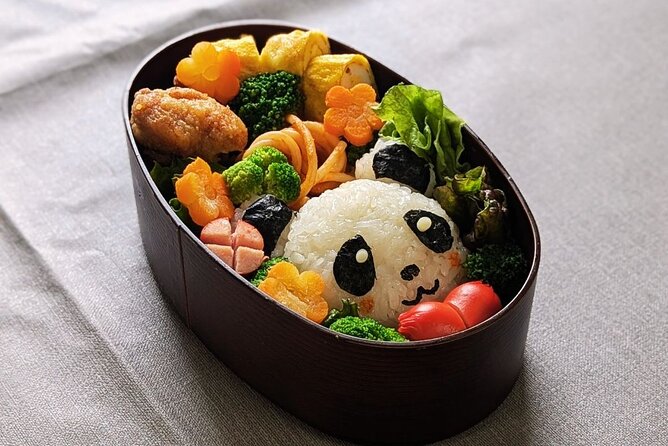
Bento boxes are a traditional Japanese meal packed with a variety of flavors, textures, and nutrients. Perfect for lunch or a light dinner, bento boxes are not only visually appealing but also balanced and healthy. In this article, we’ll guide you through making a classic bento box, complete with a detailed ingredients list, step-by-step instructions, nutrition facts, and tips to elevate your bento-making skills. Whether you’re a beginner or a seasoned cook, this guide will help you create a bento box that’s both delicious and Instagram-worthy.
Ingredients List
Here’s what you’ll need to make a classic bento box:
- Protein:
- 1 grilled chicken breast (or tofu for a vegetarian option)
- 2 boiled eggs
- Carbohydrates:
- 1 cup cooked sushi rice (or brown rice for a healthier option)
- 1 small sheet of nori (seaweed) for decoration
- Vegetables:
- 1/2 cup steamed broccoli
- 1/4 cup shredded carrots
- 1/4 cup cucumber slices
- 1/4 cup cherry tomatoes
- Fruits:
- 1/2 cup sliced strawberries or orange segments
- Extras:
- 1 tbsp soy sauce (for dipping)
- 1 tbsp sesame seeds (for garnish)
- 1 small pickled plum (umeboshi) or pickled ginger (optional)

Step-by-Step Recipe
Step 1: Prepare the Rice
- Rinse 1 cup of sushi rice under cold water until the water runs clear.
- Cook the rice according to package instructions or using a rice cooker.
- Once cooked, let it cool slightly and shape it into small rice balls or pack it neatly into one section of the bento box.
- Add a small strip of nori around the rice balls for decoration.
Step 2: Cook the Protein
- Season the chicken breast with salt, pepper, and a drizzle of olive oil.
- Grill the chicken on medium heat for 6-7 minutes on each side until fully cooked. Let it rest for 5 minutes, then slice it into bite-sized pieces.
- For boiled eggs, place eggs in boiling water for 8-10 minutes, then cool, peel, and slice in half.
Step 3: Prepare the Vegetables
- Steam the broccoli for 3-4 minutes until tender but still crisp.
- Shred the carrots and slice the cucumbers and cherry tomatoes.
Step 4: Assemble the Bento Box
- Start by placing the rice in one section of the bento box.
- Arrange the grilled chicken and boiled eggs in another section.
- Add the steamed broccoli, shredded carrots, cucumber slices, and cherry tomatoes to the remaining sections.
- Fill any small gaps with sliced strawberries or orange segments for a refreshing touch.
- Sprinkle sesame seeds over the rice or vegetables for added flavor and texture.
Step 5: Add Extras
- Include a small container of soy sauce for dipping.
- Add a pickled plum or ginger for a tangy contrast.
Nutrition Facts
Here’s the nutritional breakdown for one serving of this bento box:
- Calories: 450-500 kcal
- Protein: 35g
- Carbohydrates: 45g
- Fats: 12g
- Fiber: 6g
- Vitamins & Minerals: High in Vitamin C, Vitamin A, Iron, and Calcium
This bento box is a balanced meal, providing a good mix of macronutrients and essential vitamins. It’s low in saturated fats and high in fiber, making it a healthy choice for any meal.
Health Benefits of Bento Boxes
- Balanced Nutrition: Bento boxes typically include a variety of food groups, ensuring you get a mix of protein, carbs, and healthy fats.
- Portion Control: The compartments in a bento box help control portion sizes, preventing overeating.
- Rich in Antioxidants: Fresh vegetables and fruits provide essential vitamins and antioxidants that boost immunity.
- Low in Processed Foods: Bento boxes emphasize whole, unprocessed ingredients, promoting better digestion and overall health.
- Customizable: You can tailor your bento box to meet dietary needs, whether you’re vegetarian, gluten-free, or low-carb.
Ending Notes and Tips
- Meal Prep: Prepare ingredients like rice, grilled chicken, and boiled eggs in advance to save time.
- Variety: Switch up the ingredients to keep your bento box exciting. Try adding quinoa, salmon, or avocado for a twist.
- Presentation: Use colorful ingredients and arrange them neatly to make your bento box visually appealing.
- Storage: Store your bento box in the fridge if you’re not eating it immediately. Use an insulated bag if taking it to work or school.
- Eco-Friendly: Use reusable bento boxes and utensils to reduce waste.








